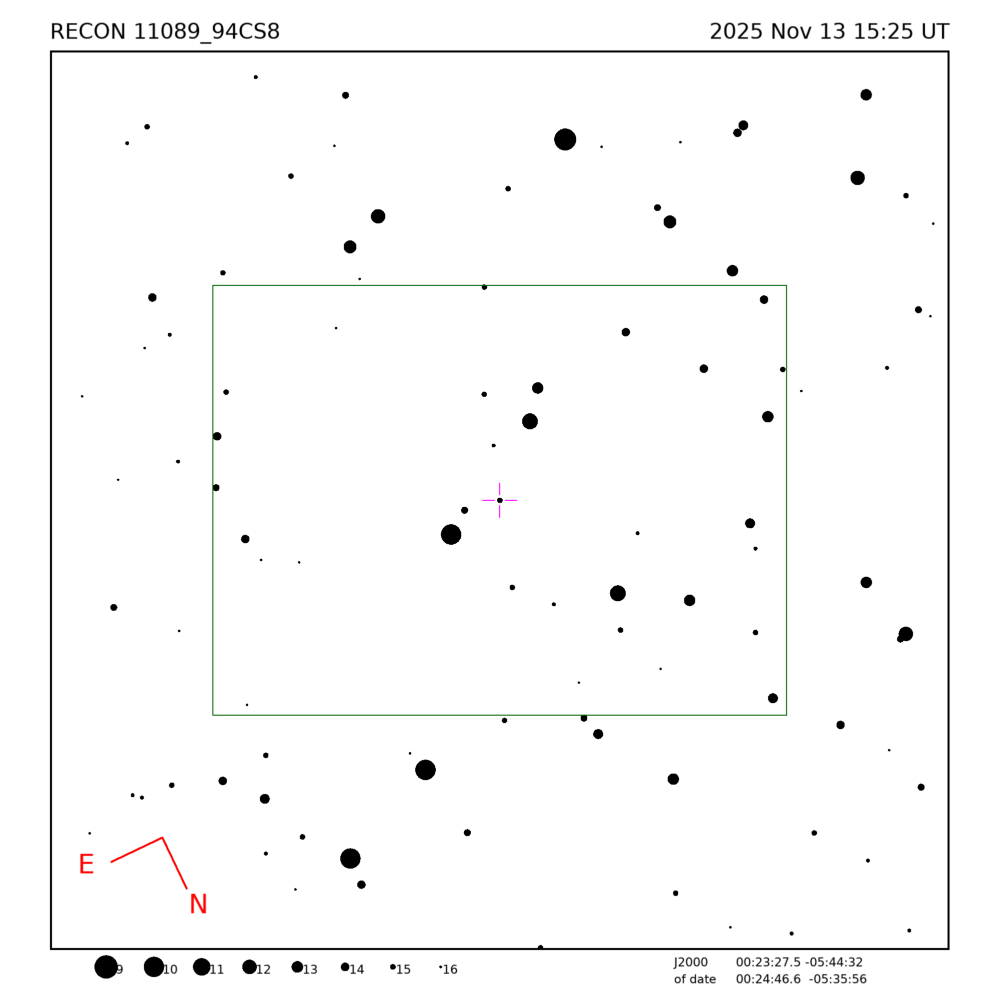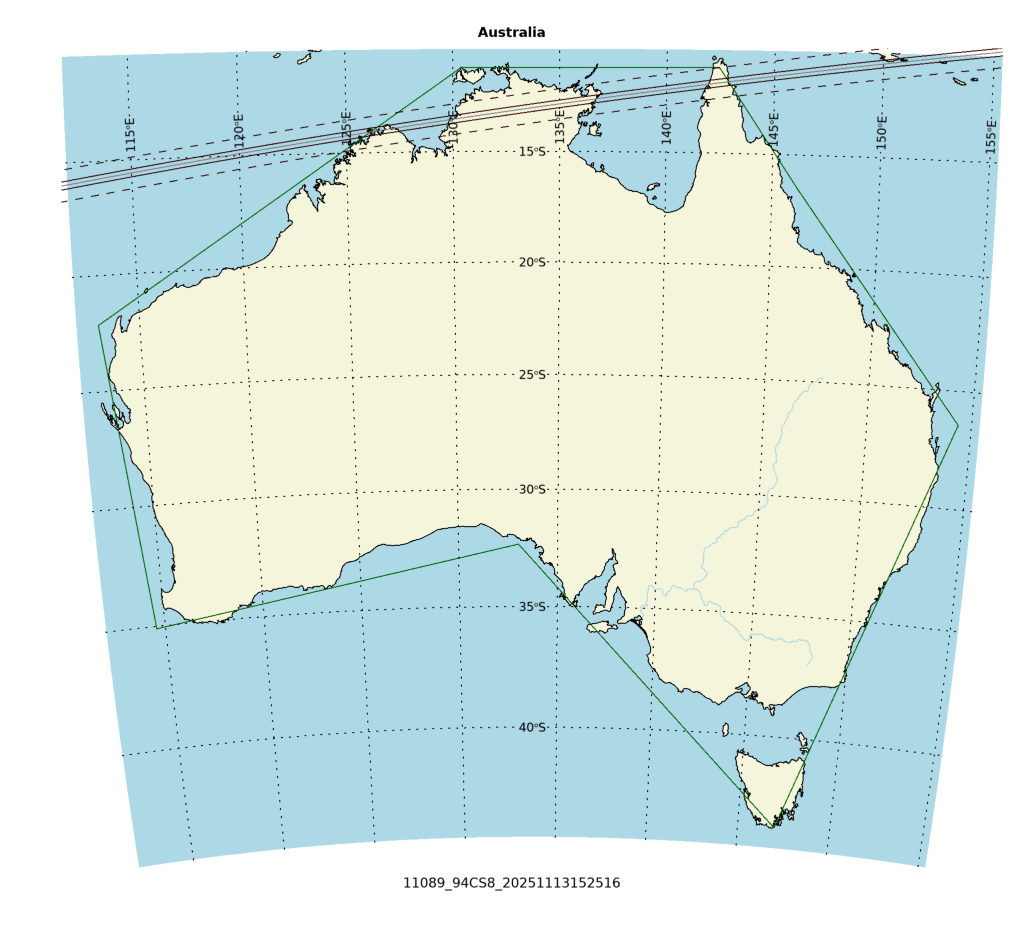
Occultation event with (11089) 94CS8, event index number 1506
Regions able to see the event: Australia
Geocentric closest approach at 2025/11/13 15:25:16 UTC
J2000 position of star is 00:23:27.5 -05:44:32
Equinox of date position of star is 00:24:46.6 -05:35:56
Star is 154 degrees from the moon. Moon is 36% illuminated.
Stellar brightness G=15.6, apparent brightess of occulting body is G=16.0
Use an exposure time of 1.20 seconds with the standard RECON-QHY system.
SNR of 7.4 per integration for unocculted signal
Expected flux drop is 60% with SNR of 4.4 for the occulted depth (per occulted point)
Apparent velocity is 7.4 km/sec on the sky relative to the star, or, 8.1 arcsec/hr.
Position angle of asteroid motion is 84.0 degrees
The recommended exposure time corresponds to 8.9 km per image.
The 1-sigma error in the time of the event is 1.2 seconds.
The 1-sigma cross-track error in the shadow position is 18.5 km.
The sky-plane scale is 3282.9 km/arcsec.
Diameter estimates:
42.3 km assuming a 5% albedo, maximum of 5.7 sec for a central chord
17.3 km assuming a 30% albedo, maximum of 2.3 sec for a central chord
Cross-track diameter of 37.0 km used for deployment plan.
Star training set for 11089_94CS8, (2025/11/13 15:25UT) Object RA Dec mag sep mel Fomalhaut 22:59:04.5 -29:29:04 1.2 31.30 159 Diphda 00:44:53.2 -17:50:42 2.0 13.19 149 12 Cet 00:31:21.6 -03:48:53 5.7 2.42 152 PPM 182173 00:23:33.5 -05:02:56 7.6 0.63 154 PPM 182202 00:24:53.6 -05:35:39 9.5 0.03 154 11089_94CS8 00:24:46.6 -05:35:56 16.0 154 Positions are for equinox of date


Star training set for 11089_94CS8, (2025/11/13 15:25UT) Object RA Dec mag sep mel Fomalhaut 22:57:39.7 -29:37:24 1.2 31.30 159 Diphda 00:43:35.8 -17:59:11 2.0 13.19 149 12 Cet 00:30:02.4 -03:57:27 5.7 2.42 152 PPM 182173 00:22:14.2 -05:11:32 7.6 0.63 154 PPM 182202 00:23:34.5 -05:44:14 9.5 0.03 154 11089_94CS8 00:23:27.5 -05:44:32 16.0 154 Positions are for J2000